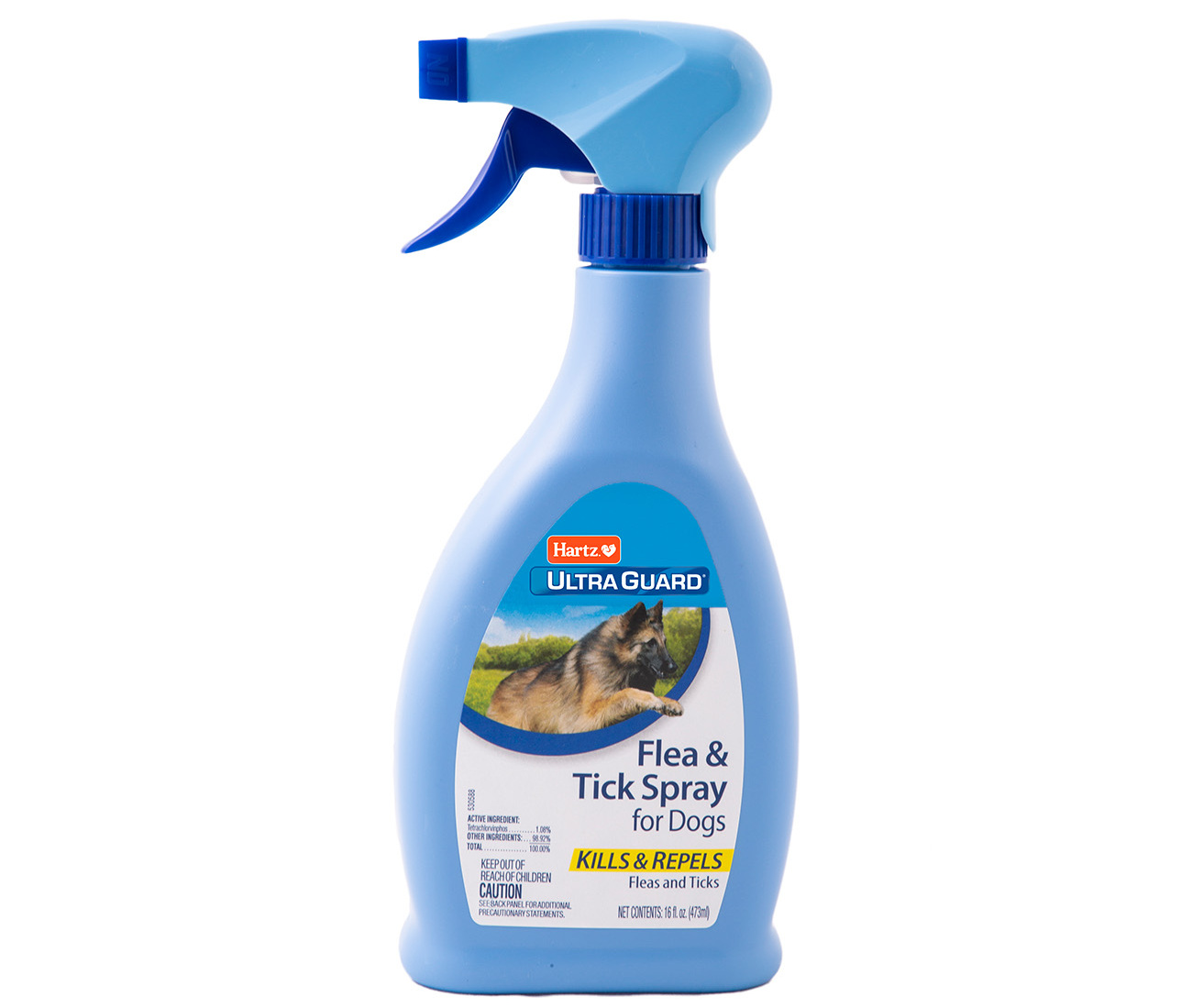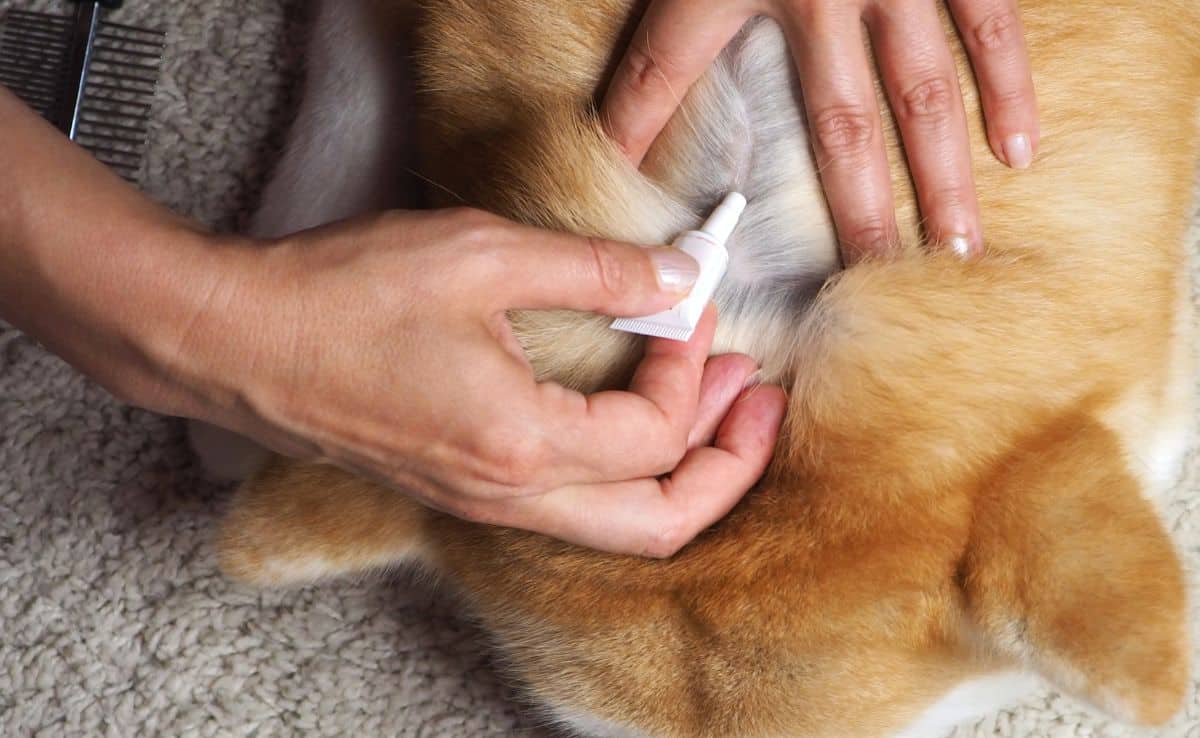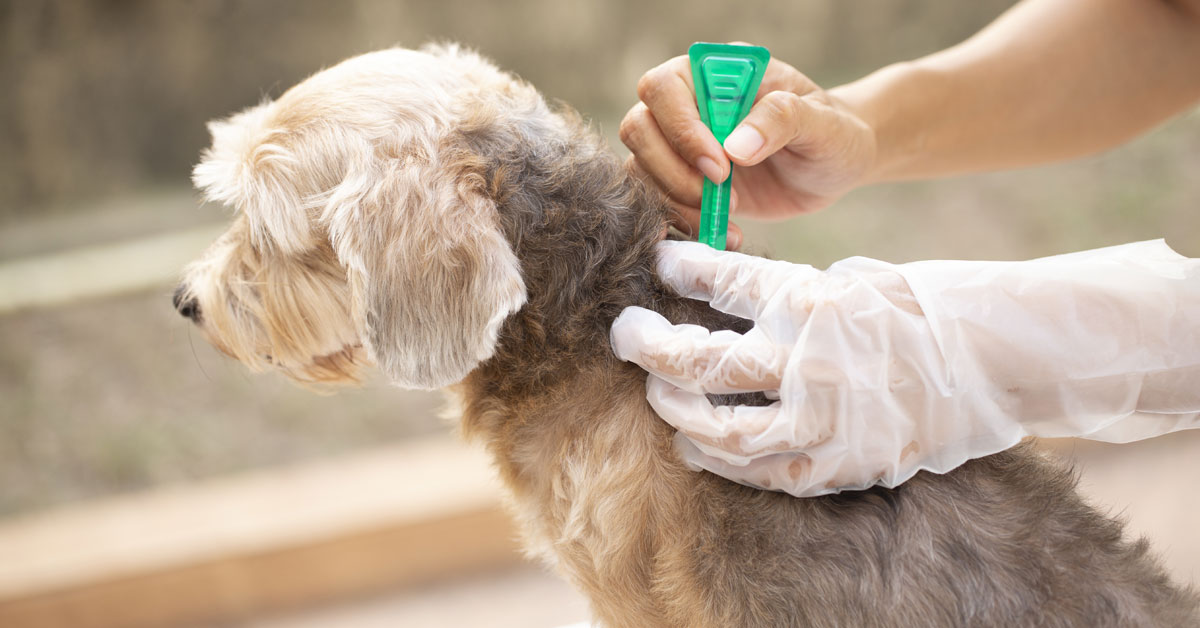Home>Health & Wellness>Common Health Issues>How To Naturally Repel Fleas And Ticks For Dogs


Common Health Issues
How To Naturally Repel Fleas And Ticks For Dogs
Published: February 15, 2024
Learn how to naturally repel fleas and ticks for dogs to prevent common health issues. Discover effective and safe methods for protecting your pet.
(Many of the links in this article redirect to a specific reviewed product. Your purchase of these products through affiliate links helps to generate commission for Pawsomeoldies.com, at no extra cost. Learn more)
Table of Contents
Introduction
Fleas and ticks are common pests that can cause discomfort and health issues for dogs. These tiny parasites can infest your furry friend, leading to itching, skin irritation, and even transmitting diseases. As a responsible pet owner, it's crucial to protect your dog from these pesky critters. While there are numerous commercial products available for flea and tick control, many pet owners are turning to natural repellents as a safer and more eco-friendly alternative.
In this article, we will explore various natural methods to repel fleas and ticks, providing you with effective and gentle ways to safeguard your dog's well-being. From essential oils to herbs and plants, we will delve into the world of natural remedies that can help keep these pests at bay. By incorporating these natural repellents into your dog's care routine, you can provide them with protection while minimizing exposure to potentially harmful chemicals.
Understanding the importance of natural flea and tick repellents is the first step towards creating a safe and comfortable environment for your canine companion. With the knowledge and insights shared in this article, you'll be equipped to make informed decisions about the best natural repellent options for your dog. Let's embark on this journey to discover the power of nature in safeguarding your dog from fleas and ticks.
Understanding Fleas and Ticks
Fleas and ticks are not just a nuisance for dogs; they can also pose significant health risks. Understanding the behavior and characteristics of these pests is crucial in effectively combating their presence.
Fleas are small, wingless insects that survive by feeding on the blood of mammals. These agile pests can jump impressive distances, allowing them to move swiftly between hosts. Once they infest a dog, they can cause intense itching, skin irritation, and in severe cases, anemia. Fleas reproduce rapidly, with a single female flea capable of laying hundreds of eggs within a short period, leading to a full-blown infestation if left unchecked.
Ticks, on the other hand, are arachnids that latch onto their hosts to feed on blood. These parasites can transmit a range of diseases, including Lyme disease and Rocky Mountain spotted fever, making them a serious health concern for both dogs and humans. Ticks are commonly found in wooded areas, tall grasses, and shrubs, where they wait for a suitable host to pass by.
Both fleas and ticks thrive in warm and humid environments, making them prevalent during the spring and summer months. However, they can also survive in temperate climates, posing a year-round threat to dogs.
Understanding the life cycle and habits of fleas and ticks is essential for effective prevention and control. By gaining insight into their behavior, pet owners can implement targeted strategies to repel and eliminate these pests, safeguarding their dog's well-being.
By comprehending the habits and risks associated with fleas and ticks, pet owners can take proactive measures to protect their furry companions. This knowledge forms the foundation for exploring natural repellents that can effectively deter these pests, providing a safer and more holistic approach to flea and tick control.
Natural Repellents for Fleas and Ticks
When it comes to safeguarding your dog from fleas and ticks, natural repellents offer a gentle yet effective approach. These alternatives to chemical-based products provide pet owners with peace of mind, knowing that they are minimizing their dog's exposure to potentially harmful substances. Natural repellents work by leveraging the power of botanical extracts, essential oils, and other natural compounds to deter fleas and ticks without compromising the well-being of your furry friend.
One of the key advantages of natural repellents is their ability to repel pests while being gentle on your dog's skin and coat. Many commercial flea and tick products contain harsh chemicals that can cause skin irritation and allergic reactions in some dogs. In contrast, natural repellents are formulated to be soothing and safe, making them suitable for dogs with sensitive skin or allergies.
Furthermore, natural repellents often boast pleasant scents derived from essential oils, adding an aromatic benefit to their pest-repelling properties. This not only helps keep your dog smelling fresh but also creates a more enjoyable grooming experience for both you and your furry companion.
By incorporating natural repellents into your dog's care routine, you can create a protective barrier against fleas and ticks while nurturing their overall well-being. These natural alternatives offer a holistic approach to pest control, aligning with the growing preference for eco-friendly and sustainable pet care practices.
As we delve deeper into the realm of natural repellents for fleas and ticks, we will explore specific botanical extracts, essential oils, herbs, and plants that possess natural pest-repelling properties. By harnessing the power of nature, pet owners can effectively shield their dogs from fleas and ticks while embracing a more natural and harmonious approach to pet care.
Essential Oils for Repelling Fleas and Ticks
Essential oils have gained popularity as natural alternatives for repelling fleas and ticks due to their potent insect-repelling properties and aromatic benefits. These concentrated plant extracts are derived from various botanical sources and are known for their efficacy in deterring pests while offering a pleasing fragrance. When used appropriately, essential oils can serve as powerful allies in the fight against fleas and ticks, providing pet owners with a safe and natural approach to pest control.
One of the most widely recognized essential oils for repelling fleas and ticks is lavender oil. Not only does lavender oil emit a delightful floral scent, but it also possesses natural insect-repelling properties. Its calming aroma can help soothe both dogs and their owners while acting as a deterrent against fleas and ticks. When applied topically or diffused in the environment, lavender oil can help create an unwelcoming environment for these pests, reducing the likelihood of infestation.
Peppermint oil is another potent essential oil that can effectively repel fleas and ticks. Its strong, minty fragrance is highly displeasing to these pests, making it an excellent natural deterrent. When diluted and applied to a dog's collar or bedding, peppermint oil can help create a protective barrier against fleas and ticks, minimizing the risk of infestation. Additionally, the refreshing scent of peppermint oil can contribute to a pleasant and invigorating atmosphere in the home.
Eucalyptus oil is renowned for its insect-repelling properties and is commonly used to deter fleas and ticks. This powerful essential oil emits a distinct, refreshing aroma that can help keep pests at bay. When properly diluted and applied to a dog's coat or living areas, eucalyptus oil can serve as a natural shield against fleas and ticks, contributing to a healthier and more comfortable environment for both dogs and their owners.
Cedarwood oil is another valuable essential oil known for its ability to repel fleas and ticks. Its woody, earthy scent acts as a natural deterrent, making it an excellent choice for pet owners seeking natural pest control solutions. By incorporating cedarwood oil into a dog's grooming routine or diffusing it in living spaces, pet owners can help fortify their dog's defenses against fleas and ticks while enjoying the grounding and calming aroma of this beneficial essential oil.
When using essential oils to repel fleas and ticks, it is essential to dilute them properly and adhere to safe application practices to ensure the well-being of dogs. Additionally, consulting with a veterinarian before using essential oils on pets is advisable, especially for dogs with specific health concerns or sensitivities. By harnessing the natural power of essential oils, pet owners can take proactive steps to protect their dogs from fleas and ticks while embracing a more holistic and natural approach to pet care.
Herbs and Plants for Repelling Fleas and Ticks
In addition to essential oils, numerous herbs and plants possess natural properties that can effectively repel fleas and ticks, offering pet owners a diverse range of botanical solutions for pest control. These natural alternatives not only serve as potent deterrents but also contribute to a greener and more sustainable approach to pet care.
Rosemary is a versatile herb known for its culinary uses as well as its insect-repelling properties. When utilized as a natural flea and tick repellent, rosemary can help create an environment that is inhospitable to these pests. Whether incorporated into homemade pet shampoos, herbal flea collars, or infused into living spaces, rosemary can act as a natural shield against fleas and ticks while imparting a pleasant and refreshing aroma.
Lemongrass, with its citrusy and uplifting scent, is another herb renowned for its ability to deter fleas and ticks. This aromatic grass contains natural compounds that repel pests, making it a valuable addition to natural flea and tick control strategies. Whether used in the form of lemongrass-infused sprays, herbal dips, or planted in outdoor living areas, lemongrass can help minimize the presence of fleas and ticks while adding a delightful fragrance to the surroundings.
Mint, particularly pennyroyal, is recognized for its potent insect-repelling properties. When used judiciously, mint can serve as an effective natural deterrent against fleas and ticks. Whether applied topically in diluted forms or utilized in herbal sachets placed in pet bedding areas, mint can help create an environment that discourages these pests, contributing to a healthier and more comfortable living space for dogs.
Chrysanthemums contain natural compounds known as pyrethrins, which are widely utilized in natural insect repellents. These compounds have been harnessed for their ability to repel fleas, ticks, and other insects, making chrysanthemums a valuable addition to natural pest control solutions. Whether incorporated into pet-safe yard sprays or utilized in the form of chrysanthemum-based products, these vibrant flowers can help deter fleas and ticks while adding a touch of natural beauty to outdoor spaces.
By harnessing the natural properties of these herbs and plants, pet owners can create a protective shield against fleas and ticks while embracing a more holistic and sustainable approach to pet care. These botanical solutions not only offer effective pest control but also contribute to a greener and more eco-friendly living environment for both dogs and their owners.
Other Natural Methods for Repelling Fleas and Ticks
In addition to essential oils, herbs, and plants, there are several other natural methods that can effectively repel fleas and ticks, providing pet owners with a diverse array of options for safeguarding their dogs. These alternative approaches leverage natural compounds and environmental modifications to create an inhospitable environment for pests, contributing to comprehensive flea and tick control strategies.
One natural method for repelling fleas and ticks involves the use of diatomaceous earth. This fine powder, derived from fossilized algae, contains microscopic sharp edges that can penetrate the exoskeleton of fleas and ticks, leading to dehydration and ultimately, their demise. When applied to pet bedding, carpets, and outdoor living areas, diatomaceous earth can help create a barrier against these pests, offering a non-toxic and environmentally friendly solution for flea and tick control.
Another effective natural approach is the use of cedar chips or shavings. Cedarwood contains natural compounds that repel fleas and ticks, making it a valuable addition to pet bedding and outdoor living spaces. By incorporating cedar chips into dog bedding or creating cedar-filled pouches to place in living areas, pet owners can help deter fleas and ticks while enjoying the pleasant and calming aroma of cedar.
Environmental modifications, such as maintaining a well-groomed yard and regular vacuuming of indoor spaces, can also contribute to natural flea and tick control. Keeping grass and shrubbery trimmed reduces the habitats where fleas and ticks thrive, minimizing the risk of infestation. Additionally, frequent vacuuming of carpets, rugs, and upholstery helps remove flea eggs, larvae, and ticks, reducing their presence in the indoor environment.
Furthermore, regular grooming and bathing of dogs using natural pet shampoos can help repel fleas and ticks while promoting overall skin and coat health. Certain natural ingredients, such as neem oil and oatmeal, possess properties that deter pests while soothing and nourishing a dog's skin, making them valuable components of a natural grooming routine.
By embracing these additional natural methods for repelling fleas and ticks, pet owners can create a multi-faceted approach to pest control, leveraging a combination of natural compounds, environmental adjustments, and grooming practices to safeguard their dogs. These holistic strategies not only offer effective protection against fleas and ticks but also contribute to a healthier and more harmonious living environment for both dogs and their owners.
Conclusion
In conclusion, the quest for natural methods to repel fleas and ticks for dogs has unveiled a diverse array of botanical solutions that offer effective and gentle alternatives to chemical-based products. By harnessing the power of essential oils, herbs, plants, and other natural methods, pet owners can create a protective shield against these pesky pests while nurturing their dog's overall well-being.
Essential oils, such as lavender, peppermint, eucalyptus, and cedarwood, have emerged as potent allies in the fight against fleas and ticks. Their natural insect-repelling properties, coupled with pleasing aromas, make them valuable components of natural pest control strategies. When used judiciously and in accordance with safe application practices, essential oils can help create an environment that deters fleas and ticks, contributing to a healthier and more comfortable living space for dogs.
Furthermore, herbs and plants, including rosemary, lemongrass, mint, and chrysanthemums, offer additional botanical solutions for repelling fleas and ticks. These natural alternatives not only serve as effective deterrents but also contribute to a greener and more sustainable approach to pet care. By incorporating these herbs and plants into pet grooming routines, living spaces, and outdoor environments, pet owners can fortify their dog's defenses against fleas and ticks while embracing a more holistic and eco-friendly approach to pest control.
Additionally, natural methods such as diatomaceous earth, cedar chips, environmental modifications, and regular grooming practices provide pet owners with a comprehensive toolkit for flea and tick control. These alternative approaches leverage natural compounds and environmental adjustments to create an inhospitable environment for pests, contributing to holistic strategies that safeguard dogs from infestations.
By embracing natural repellents and methods for repelling fleas and ticks, pet owners can provide their dogs with protection while minimizing exposure to potentially harmful chemicals. This shift towards natural pest control not only aligns with the growing preference for eco-friendly and sustainable pet care practices but also reflects a deeper commitment to the well-being of canine companions.
In essence, the exploration of natural repellents for fleas and ticks has illuminated the power of nature in safeguarding dogs from these pesky pests. By integrating these natural solutions into their dog's care routine, pet owners can create a safer, more harmonious environment for their furry friends, fostering a bond that is rooted in holistic wellness and care.














